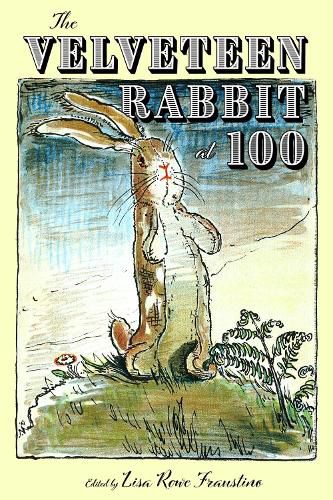Readings Newsletter
Become a Readings Member to make your shopping experience even easier.
Sign in or sign up for free!
You’re not far away from qualifying for FREE standard shipping within Australia
You’ve qualified for FREE standard shipping within Australia
The cart is loading…






This title is printed to order. This book may have been self-published. If so, we cannot guarantee the quality of the content. In the main most books will have gone through the editing process however some may not. We therefore suggest that you be aware of this before ordering this book. If in doubt check either the author or publisher’s details as we are unable to accept any returns unless they are faulty. Please contact us if you have any questions.
Contributions by Kelly Blewett, Claudia Camicia, Alisa Clapp-Itnyre, Lisa Rowe Fraustino, Elisabeth Graves, Karlie Herndon, KaaVonia Hinton, Holly Blackford Humes, Melanie Hurley, Kara K. Keeling, Maleeha Malik, Claudia Mills, Elena Paruolo, Scott T. Pollard, Jiwon Rim, Paige Sammartino, Adrianna Zabrzewska, and Wenduo Zhang
First published in 1922 to immediate popularity, The Velveteen Rabbit by Margery Williams has never been out of print. The story has been adapted for film, television, and theater across a range of mediums including animation, claymation, live action, musical, and dance. Frequently, the story inspires a sentimental, nostalgic response-as well as a corresponding dismissive response from critics. It is surprising that, despite its longevity and popularity, The Velveteen Rabbit has inspired a relatively thin dossier of serious literary scholarship, a gap that this volume seeks to correct.
While each essay can stand alone, the chapters in "The Velveteen Rabbit" at 100 flow in a coherent sequence from beginning to end, showing connections between readings from a wide array of critical approaches. Philosophical and cultural studies lead us to consider the meaning of love and reality in ways both timeless and temporal. The Velveteen Rabbit is an Anthropocene Rabbit. He is also disabled. Here a traditional exegetical reading sits alongside queering the text. Collectively, these essays more than double the amount of serious scholarship on The Velveteen Rabbit. Combining hindsight with evolving sensibilities about representation, the contributors offer thirteen ways of looking at this Rabbit that Margery Williams gave us-ways that we can also use to look at other classic storybooks.
$9.00 standard shipping within Australia
FREE standard shipping within Australia for orders over $100.00
Express & International shipping calculated at checkout
This title is printed to order. This book may have been self-published. If so, we cannot guarantee the quality of the content. In the main most books will have gone through the editing process however some may not. We therefore suggest that you be aware of this before ordering this book. If in doubt check either the author or publisher’s details as we are unable to accept any returns unless they are faulty. Please contact us if you have any questions.
Contributions by Kelly Blewett, Claudia Camicia, Alisa Clapp-Itnyre, Lisa Rowe Fraustino, Elisabeth Graves, Karlie Herndon, KaaVonia Hinton, Holly Blackford Humes, Melanie Hurley, Kara K. Keeling, Maleeha Malik, Claudia Mills, Elena Paruolo, Scott T. Pollard, Jiwon Rim, Paige Sammartino, Adrianna Zabrzewska, and Wenduo Zhang
First published in 1922 to immediate popularity, The Velveteen Rabbit by Margery Williams has never been out of print. The story has been adapted for film, television, and theater across a range of mediums including animation, claymation, live action, musical, and dance. Frequently, the story inspires a sentimental, nostalgic response-as well as a corresponding dismissive response from critics. It is surprising that, despite its longevity and popularity, The Velveteen Rabbit has inspired a relatively thin dossier of serious literary scholarship, a gap that this volume seeks to correct.
While each essay can stand alone, the chapters in "The Velveteen Rabbit" at 100 flow in a coherent sequence from beginning to end, showing connections between readings from a wide array of critical approaches. Philosophical and cultural studies lead us to consider the meaning of love and reality in ways both timeless and temporal. The Velveteen Rabbit is an Anthropocene Rabbit. He is also disabled. Here a traditional exegetical reading sits alongside queering the text. Collectively, these essays more than double the amount of serious scholarship on The Velveteen Rabbit. Combining hindsight with evolving sensibilities about representation, the contributors offer thirteen ways of looking at this Rabbit that Margery Williams gave us-ways that we can also use to look at other classic storybooks.